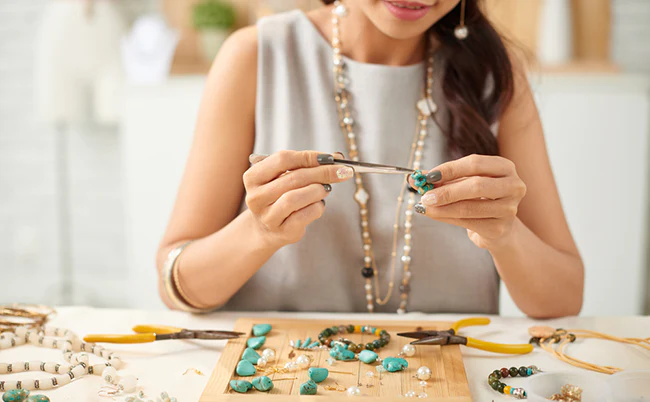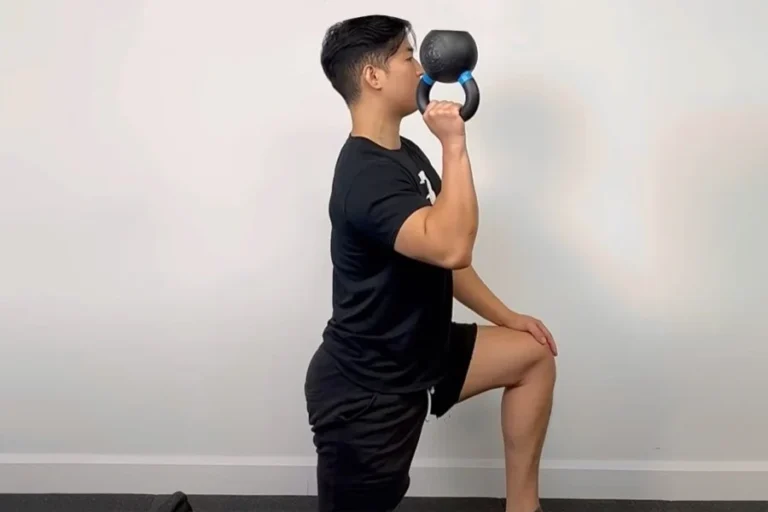7 Essential Jewelry-Making Tools for Crafting Beautiful Pieces
The right jewelry can elevate an outfit, but sometimes, it can be difficult to find the perfect piece. If you’re struggling to find jewelry that matches your style or personality, consider making it yourself. Jewelry making is an excellent outlet for creativity and allows you to explore new jewelry styles.
There’s a profound joy and satisfaction that comes from transforming raw materials into wearable art. However, every craft needs a set of essential tools that bring creations to life.
Having the right materials makes a difference in the quality and ease of your work. Read on to learn what jewelry-making tools you need as a beginner.
1. Everything For Beads
Beadwork is a common technique used in making jewelry. If you want to make beaded jewelry, you need beads, bead stoppers, beading needles, and a bead mat.
A bead stopper at the end of the string prevents beads from sliding off. You can use a beading needle if you struggle to thread beads onto strings or wires. To arrange your beads, lay the bead mat to keep the materials from rolling away.
Beads come in different shapes, sizes, and materials. Their versatility allows you to create unique, eye-catching designs. Some artisans use glass and beads to make colorful and beautiful pieces.
2. Strings and Wires
Strings and wires serve as the foundation for many jewelry pieces. These materials provide structure and support for beads, charms, and other adornments. Invest in high-quality strings and wires to ensure the durability and longevity of your jewelry.
There are many types of strings used in jewelry making, including nylon and leather. They offer various grades of strength and flexibility, depending on the design. Strings provide lightweight comfort to consumers as well.
Likewise, wires come in different materials, including gold-filled, sterling silver, and copper. Each offers distinctive properties for specific applications. Moreover, wires come in different gauges, where the higher the number, the thinner the wire.
Regardless of the base material, choose the appropriate string or wire. Doing so can affect the quality, producing a mediocre or a masterpiece. When canvassing for materials, assess their durability, flexibility, and material composition.
3. Jewelry Plier
One jewelry plier you need is a round-nose plier with tapered jaws. This is best for creating loops and curves. The flat-nose plier is perfect if you need to grip or straighten the wire because of its flat surface.
Chain-nose pliers have narrow tips, allowing you to grab small objects like clasps and jump rings. You also want to get a crimp plier to secure beads into strings and wires. This provides a neat and secure finish to the final product.
4. Cutter
A wire cutter is a sharp blade that can cut wires, headpins, or eye pins. It provides precise cutting, allowing you to create clean edges and efficiently remove excess wire. This simple detail will make your pieces look more refined and professional.
Aside from a wire cutter, you also want to invest in a flush cutter. It makes flat cuts without leaving sharp edges or burrs. This kind of cutter is ideal for giving precise cuts for a seamless fit.
A good example is trimming the wire of a dainty jewelry piece. Cutting a tiny chain with a regular wire cutter will make it look jagged. With a flush cutter, you can guarantee a clean, seamless edge.
5. Hammer and Saw
If your forte in jewelry-making is metalwork, you need a hammer and saw.
Metalwork jewelry involves making pieces using different metals. It includes gold, silver, copper, or brass. This technique often incorporates other methods like soldering, texturing, shaping, and forging material.
How do you use a hammer and saw in crafting pieces? As tools for jewelry-making, they shape and manipulate metal components. A hammer is often used to forge metal pieces because of its weighted head and flat surface.
This enables you to create unique patterns and textures on metal surfaces. It adds visual interest to the design integrated into the piece.
On the other end, you can use saw frames and blades to cut metal sheets, wires, and tubing. You can adjust the trim depending on the size and shape you need. With enough practice, you can transform raw metal into intricate components.
6. Tweezers and Triblets
A tweezer and triblet can be a valuable tool for beginner jewelry artisans. These tools are flexible and will help you assemble intricate and dainty designs.
With its fine tips, you can use a tweezer to handle small components, such as beads and gemstones. They are most useful in securing an element in place. Triblets are best for shaping and sizing circular jewelry.
This is often used when making rings, bracelets, and hoop earrings. For instance, you have graduated markings for different ring sizes. Using a triblet allows you to achieve consistent sizing in jewelry pieces.
7. Soldering Torch, Soldering Block, Files, and Sanding Sheets
Do your designs require you to combine different metal components? You need a soldering torch to produce intense heat to solder and fuse metal parts. Soldering allows you to fuse different components to create a striking design.
If you’re a beginner, keep in mind that soldering has a steep learning curve, and it can often get messy. Soldering can leave residues, and excess heat can cause oxidation, damaging your work area. If you’re planning to solder, don’t forget to invest in a soldering block.
This consists of non-combustible materials that prevent damage to surfaces. To ensure smooth edges, prepare files and sanding sheets. These tools will help you shape and refine metal components for a polished finish.
Essential Jewelry-Making Tools for Beginners
When it comes to jewelry making, the tools you use can make or break your craft. Choose quality and appropriate materials to ensure you produce a masterpiece. From beads to torches, each tool serves a specific purpose in bringing creative visions to life.
Invest in quality jewelry-making tools and master the techniques. With this, you can unlock your full potential and craft intricate pieces. Discover more crafting tips and inspiration by checking out our other blog posts.
Stay in touch to get more updates & news on Discover Tribune!






